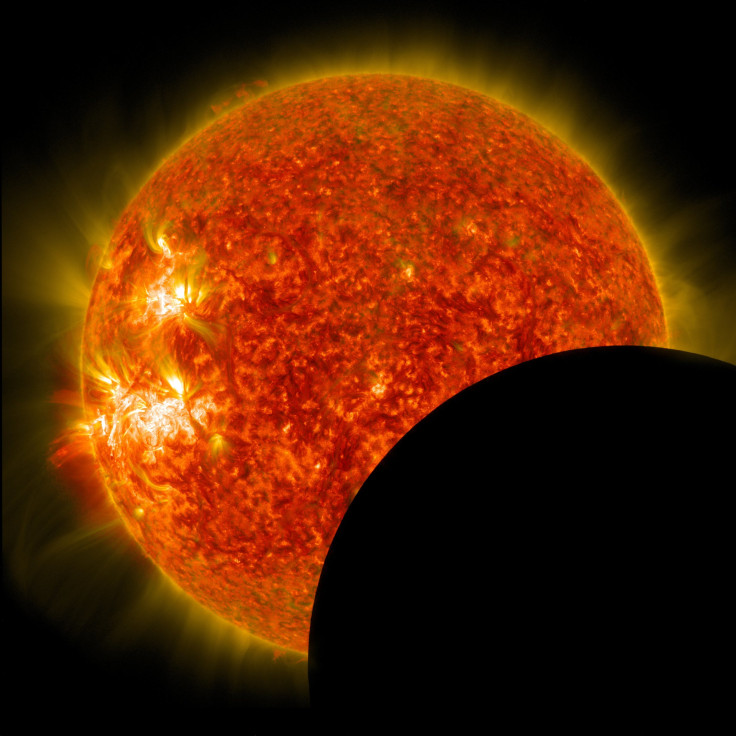Eclipse 2017 Eye Health, What Happens If You Look At Sun, Eclipse
It’s pretty common knowledge that you should never look directly at the sun, even with sunglasses on, so why would different rules apply to looking at the sun during an eclipse? They don’t. “The eclipse is not any different from just looking at the sun, unless you’re in totality,” Dr.Brandon Lujan, assistant professor of Ophthalmology at the Casey Eye Institute at Oregon Health & Science University, told International Business Times.
The upcoming total solar eclipse that will grace the United States with night-like shadow for a few minutes on Aug. 21 is promising to draw a crowd but if you’re planning to view it, make sure safety is your first priority.
Read: Solar Eclipse Glasses: Where To Get Your ISO Compliant Pair

Looking directly at the sun without the proper eye protection under any circumstances can cause serious damage to the retina and a decline in eyesight. Even if one part of the sun is still visible behind the moon it can cause damage. “The sunlight gets focused by the front of the eye onto the retina, which is like the film in a camera, the back of the eye,” said Dr.Lujan. When this happens it causes a chemical reaction that can then permanently damage the eye.
Easily noticeable symptoms include spotty or blurred vision after the exposure, but it would likely not impact your ability to see certain colors. And those symptoms can begin almost immediately or any time in the following hours or few days. Sometimes the symptoms take a bit more time Dr.Lujan said, “The worst of it usually isn’t apparent until some time,” but it varies and there isn’t a lot of hard data on how long it takes.
But the good news is that even if you sustain eye damage from viewing the eclipse, it might heal, “It will almost always get better,” Dr. Lujan told IBT. But he noted that there’s no specific treatment for such damage, the body just has to heal itself so it will take some time, “The only treatment is prevention,” he said.
Dr.Lujan compared the retina healing after sun exposure to the brain healing after a stroke. “The retina is brain tissue, so similar to a stroke there can be a lot of function you lose initially but then over time the body can kind of improve,” he explained.
Read: Total Solar Eclipse August 2017: What It Is, How And Where To See It
The damage usually occurs in the central part of the eye, the part most people use for their best. “Most people would be looking at it as if they were looking at, like, words on the screen,” said Dr.Lujan, “It’s important not to do that.” Doing that is what would cause the damage to the back of the eye. Only eclipse glasses or hand-held filters in good shape will protect your eyes while viewing the eclipse. So don’t try viewing with regular sunglasses or home made filters. “The sun has the visible light and sunglasses help decrease that, but there’s also the UV light that’s totally invisible and that’s what causes damage,” Dr. Lujan said.

If you’re looking to purchase a pair of eclipse glasses or a filter before the day of the eclipse, NASA has a list of verified solar viewer brands as well as vendors and retail chains that carry compliant glasses. To guarantee you’ll be protected, make sure any glasses and filters you buy meet international safety standards or that they’re ISO compliant. Before use, make sure your filter or glasses have no scratches or scuffs, this renders them useless and will offer compromised protection.
Keep in mind these viewers and glasses only make viewing the eclipse suitable with your eyes, not through a camera or binoculars. Such products actually magnify the rays from the sun, so viewing through a lens would make the rays stronger than the filters are designed to handle.
The one time you can view the eclipse without eye protection is when the moon has fully covered the sun said Dr. Lujan. To check whether or not you’ll be in the path of totality and how long it will last, you can check a Google simulator for the eclipse. “The important thing there is to know how long totality is,” this is because once the sun starts to pop back out you’ll need your glasses to protect your eyes again. “Really important not to be looking before its totality or even immediately after when the sun kind of comes back out,” he said.
© Copyright IBTimes 2024. All rights reserved.











